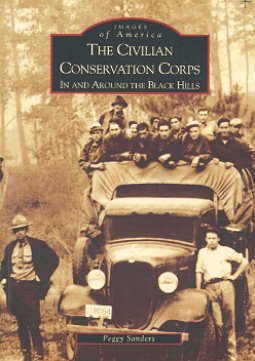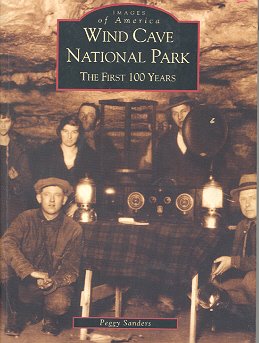Use the link to southdakotaccc.com to find a form you can fill out (while you are online or you can print it then fill it out). Either way you will mail it in to the government to receive copies of CCC papers. You can find out where and when someone served, often you'll learn what their job was, if they took education courses, what they weighed when they enrolled and when they were discharged, were ever AWOL. . . and much more.
For men who served in South Dakota, please be sure to make copies of what you received and send them to me for the CCC Museum of South Dakota's files and also we will put his name in the database of those who served in SD.
Here is the link http://www.southdakotaccc.com/nara-form.pdf
Thanks,
Peggy
Sigrid Gustav (Swede) Johnson
Gus was in Company 2757, SP-3, at Blue Bell, SD. It was also called Camp Narrows and Robbers' Roost. He became a catskinner and worked his way from enrollee to leader during the years he served, 1935-1939. He was the only CCC worker who was ever given a superior rating by lst Lt. Carl G. Paulsen, Company Commander. Apparently his work ethic was his ticket to staying in longer than most.
Posted by
Civilian Conservation Corps
0
comments
![]()
Swede Johnson

Posted by
Civilian Conservation Corps
0
comments
![]()
Melvin Hermanson and the camp mascot
 Camp mascots came in all types and sizes though a woodchuck was somewhat unusual.
Camp mascots came in all types and sizes though a woodchuck was somewhat unusual.
Mel served at Mystic, F-1 during part of his six years in the Cs. Because he was a mess steward and in food service, he was exempt from the standard six month hitch rule.
Posted by
Civilian Conservation Corps
2
comments
![]()
CCC Worker Bronze Statue and Mel
 Melvin Hermanson donated the funds to procure this bronze statue. For now the statue is situated inside the Hill City Chamber of Commerce building and it will be placed outside the new South Dakota CCC Museum at Hill City. (Details further down on blog.) The plaque mentions his nickname of "Sarge" Melvin Hermanson.
Melvin Hermanson donated the funds to procure this bronze statue. For now the statue is situated inside the Hill City Chamber of Commerce building and it will be placed outside the new South Dakota CCC Museum at Hill City. (Details further down on blog.) The plaque mentions his nickname of "Sarge" Melvin Hermanson.
Posted by
Civilian Conservation Corps
1 comments
![]()
Gabriel J. Raba
Posted by
Civilian Conservation Corps
2
comments
![]()
CCC Cabins on the property
Located on the property behind the Chamber of Commerce/CCC Musuem building, and across Spring Creek are these two cabins which we are told were CCC-built. They are part of the real estate package.
The cabins are vacant and in good repair. Their use in this endeavor hasn't been determined.
Posted by
Civilian Conservation Corps
0
comments
![]()
Labels:Books CCC-built cabins on the property
Picnic tables available beside museum
Picnic tables and a good-sized area for running around and playing is just outside the door.
Spring Creek runs at the base of the hill, just behind the main building.
Posted by
Civilian Conservation Corps
0
comments
![]()
Labels:Books Picnic tables and Spring Creek at the CCC Museum
CCC Boy Bronze Statue
 A 6-foot tall bronze statue of a CCC worker will stand sentry and bid welcome at the entrance to the CCC museum. Across the country 42 other statues have been put into place and soon it will be South Dakota's turn. The original statue, as well as a manufacture mold, were created at Elliot Ganz Foundry in New York. The first statue was placed in North Higgins State Park, Roscommon, MI on June 3, 1995.
A 6-foot tall bronze statue of a CCC worker will stand sentry and bid welcome at the entrance to the CCC museum. Across the country 42 other statues have been put into place and soon it will be South Dakota's turn. The original statue, as well as a manufacture mold, were created at Elliot Ganz Foundry in New York. The first statue was placed in North Higgins State Park, Roscommon, MI on June 3, 1995.
Each statue has a unique base usually made from stone native to the area. In other respects the statues are identical.
Posted by
Civilian Conservation Corps
0
comments
![]()
Origin of the CCCs
The agency was created to solve two of the nation's biggest problems--unemployment and the need to improve the country's natural resources.
In 1932 just twenty-five percent of men aged 15-24 had even a part-time job. The balance of the nation's young men and a majority of older men were on the streets with no jobs to be had. No jobs, no money, no food. The men lined up for free food in soup lines.
It was the Great Depression.
April 7, 1933--just 37 days after his inauguration, the first man was enrolled in the CCCs.
Posted by
Civilian Conservation Corps
2
comments
![]()
Labels:Books Origin of the CCCs
Typical CCC Enrollee
All boys were given board, room, clothing, medical attention and $30.00 per month. They kept five dollars--which went a long way in those days--and the rest was mandated to go to their families back home. In 1939 the family allotment was reduced to $22.00 and the boys got to use the eight dollar balance.
Posted by
Civilian Conservation Corps
0
comments
![]()
Camp Designations
Martin Farrell was enrolled in Camp F-4, Pactola, within the time frame of June 1933 and October 1935.
Each camp had a designated number which signified which agency was in charge of the project. F-4 signified it was under the jurisdiction of the National Forest.
F National Forest
S State Forest
P Private Forest
MC Private Land (Mosquito Control)
A Agriculture (Bureau of Animal Industry)
BF Bureau of Fisheries and Wildlife, Federal Game Refuge
BS(Biological Survey)
NA National Arboretum (Bureau of Plant Industry)
TVA Tennessee Valley Authority
BR Federal Reclamation Project
DG Public Domain (Grazing)
G (Department of Grazing)
GF Oregon and California Land Grant (Grazing)
GLO (Grazing Service/Land Grant)
GNP (Grazing Service/National Park)
MP Military Park
PE Private Land Erosion
D Drought
P Private
E Erosion Control Service
SCS Soil Conservation Service
MA Municipal Area
TVA-P Tennessee Valley Authority (State Park Division)
A Army Military Reservations
C of E State Land (Corps of Engineers)
Navy Naval Military Reservation
Posted by
Civilian Conservation Corps
0
comments
![]()
Labels:Books Camp Designations










